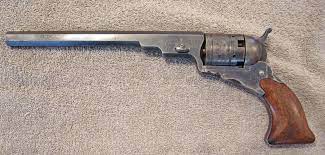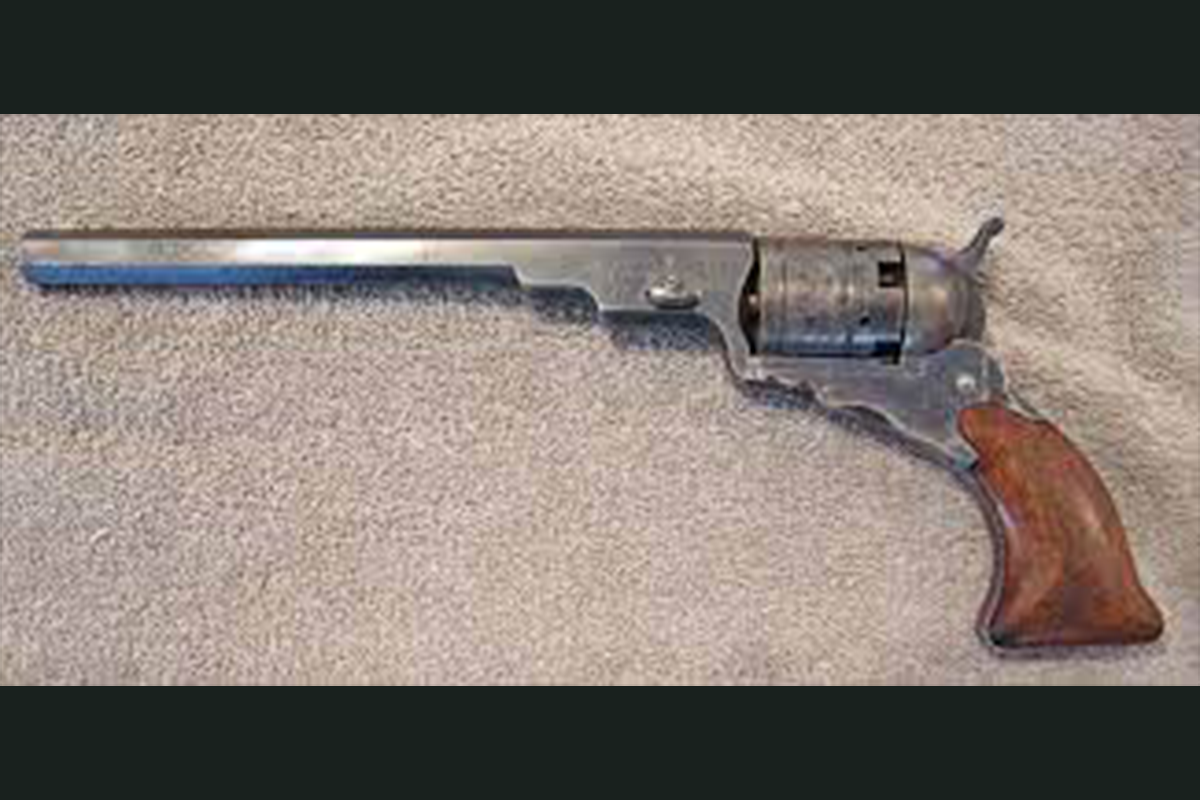
The Colt Paterson was invented in 1831 by Samuel Colt and named the Paterson for the Colt company in Paterson, New Jersey. It was patented in 1836 and became synonymous with the Republic of Texas which served as a proving ground for the revolving .36 caliber. It was the first practical revolving cylinder revolver ever made. Initially, it was a .28 caliber five-cylinder followed a year later by .36 caliber. Originally it had no loading lever and had to be partially disassembled to re-load. In 1839 a loading lever and a capping window were installed into the design to allow reloading without disassembly. Colt retrofitted the earlier models to include a loading lever and capping window. A new patent in 1849 protected the company from copyright infringements and gave Colt a monopoly in revolvers until the mid-1850s. (I have a reproduction hanging on my wall and had to take it down and disassemble it to refresh my memory.)
In 1839 the Texas government ordered 180 Paterson Colts. It gave the Texans the firepower to defend themselves and put the hostile Indian tribes on the defensive. The Holster Model No. 5 with the 9-inch barrel was the one carried by the Texas Rangers and was called the “Texas Model.” A drawback was the tricky trigger which was extended when the hammer was cocked. If the trigger jammed in the retracted state it would render the firearm useless. Another problem was lack of firepower. The .36 caliber was not strong enough to take the enemy out of the fight. In 1847, Texas Ranger Captain Samuel Walker teamed up with Colt to produce the more powerful .44 caliber Walker Colt.
The four production models: the first was a No. 2 a so-called Belt Model. The No. 3 was an extremely close design. The Pocket or Baby Model, and the No. 5 Holster or Texas model.






